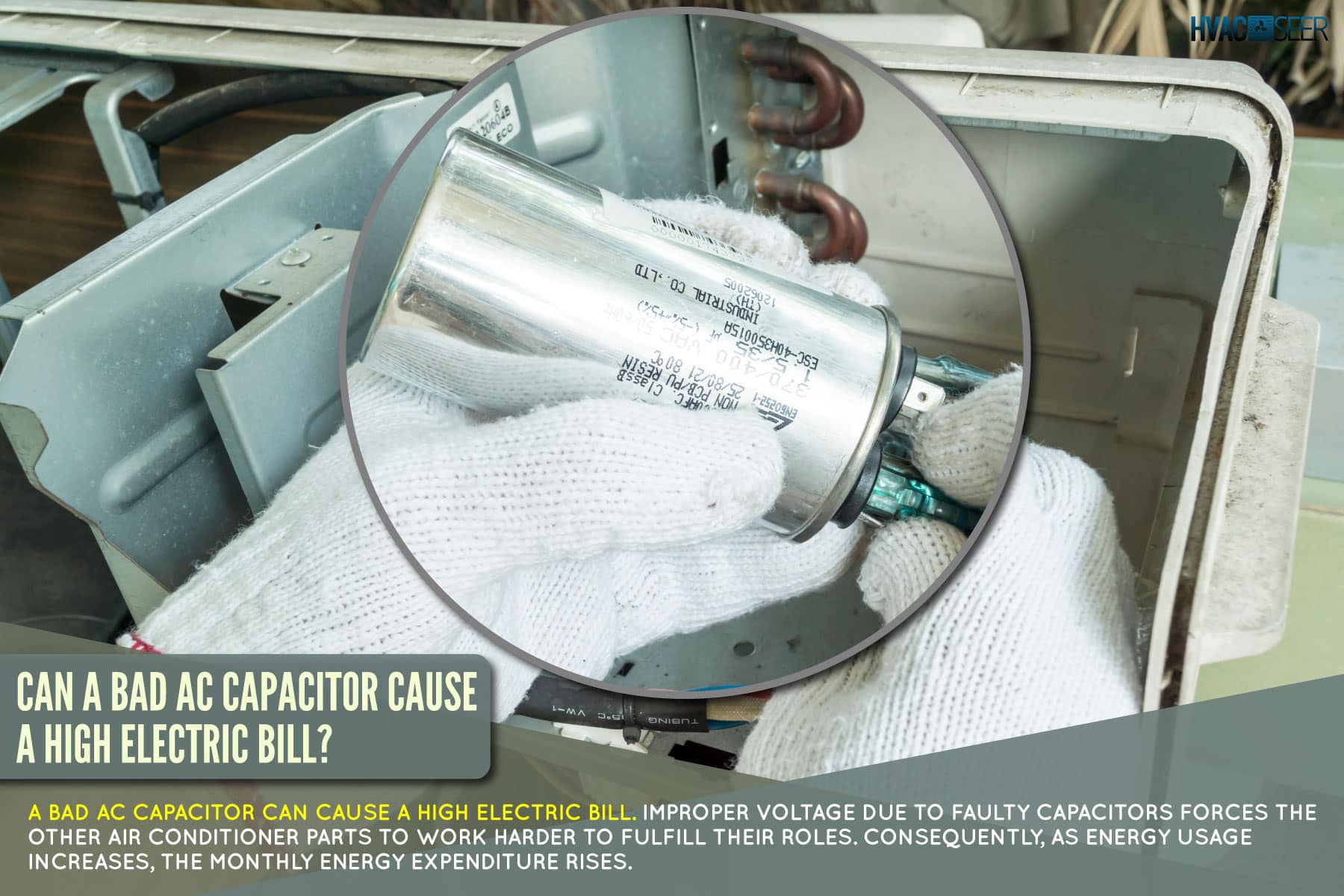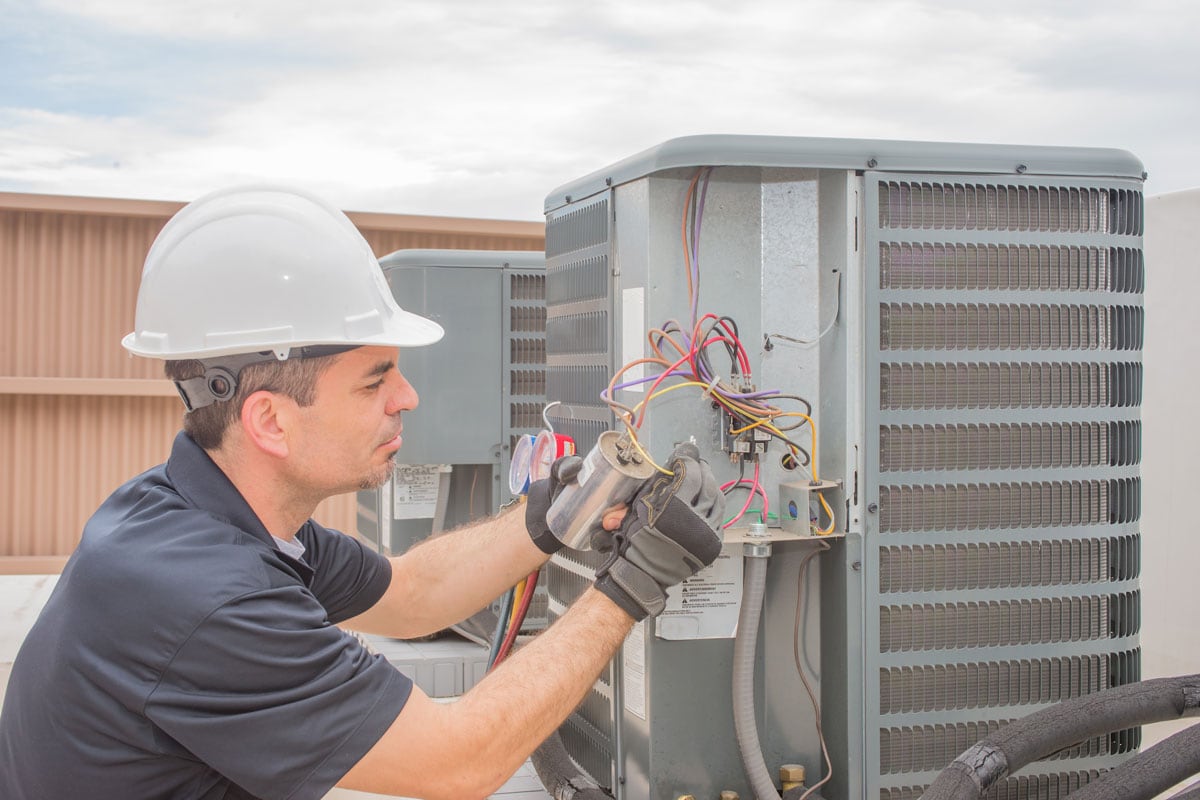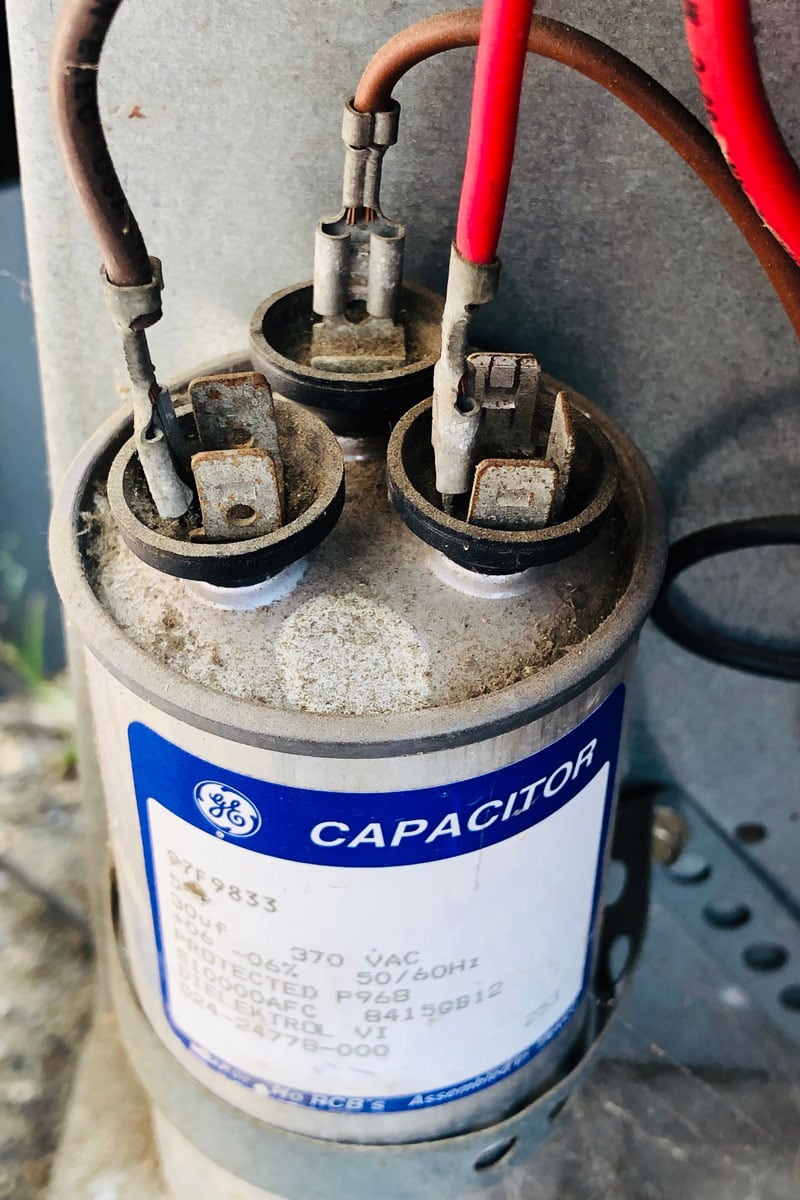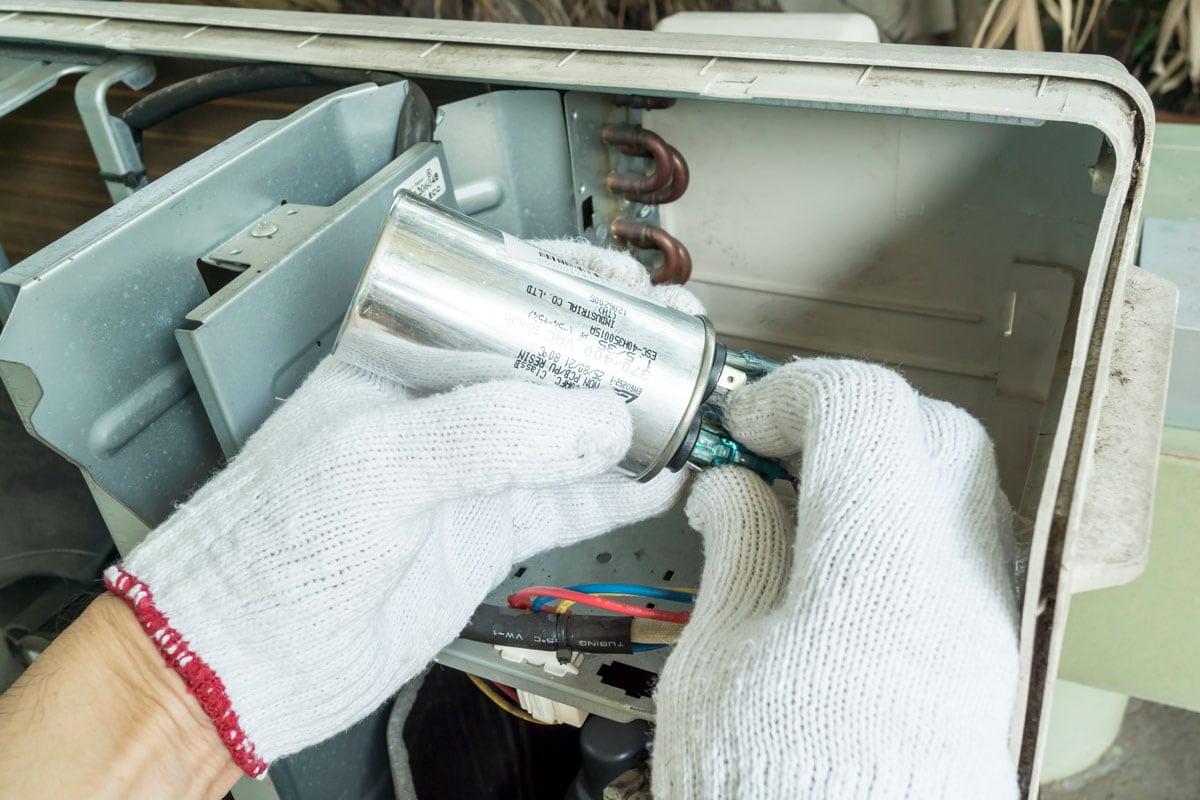Although ACs consume a lot of power, their inefficiency will cause you to spend more on cooling than usual. We examined whether a bad ac capacitor can produce a high power bill, and this is what we discovered.
A bad AC capacitor can cause a high electric bill. Improper voltage due to faulty capacitors forces the other air conditioner parts to work harder to fulfill their roles. Consequently, as energy usage increases, the monthly energy expenditure rises.
Continue reading to learn about the signs of a failing AC capacitor. Furthermore, we will help you understand the types and functions of capacitors and why capacitors fail. Finally, we will discuss how long your capacitor lasts and whether you can replace it on your own. Let's get right in.

Symptoms Of Capacitor Failure
Here is a brief overview of the most common symptoms to identify a faulty AC capacitor when evaluating your AC.
High Electricity Bills
You will notice a significant energy bill spike if the AC has a faulty capacitor. The defective capacitor causes the AC to consume more energy to operate. This inefficiency results in higher energy bills.
A/C Not Blowing Cold Air
You may also notice that warm air, rather than cold air, blows through the vents when your AC capacitor is defective.
If you try turning your condenser unit on and off again, but the problem persists, the capacitor may be failing. This problem can occur when the air conditioning system short circuits or sustains damage from the elements.
Strange Noise
When you turn on an air conditioner, you should not hear any noise. If you hear an unusual noise, such as humming or clicking, it could be coming from a broken or malfunctioning capacitor, which you will need to replace or fix.
A/C Shuts Off Randomly
The AC unit will shut down on its own if there is a problem with the capacitor since it powers the AC.
It is probable that the capacitor no longer supplies enough energy to the unit. Therefore, the AC fails to store enough charge to maintain overall functioning. So, consider replacing the AC capacitor as soon as possible.
A/C Will Not Turn On
Air conditioners operate smoothly; when you press a button, they switch on almost instantly, and the power transition is only a few seconds. If your air conditioner takes a long time to start, it might be because the power capacitor has failed or has become outdated.
What Is The Function Of An AC Capacitor?

In function, an AC capacitor is similar to a battery, yet they act in fundamentally different ways. The capacitor absorbs and stores electrical energy that can be used to start and maintain the fan motors.
Capacitors aid in keeping the motors charged consistently, allowing the air conditioner to operate reliably and effectively for extended periods.
Types of Capacitors
There are two types of AC capacitors. These capacitors have different subtypes and perform different functions.
Let's investigate the different capacitors found and utilized in AC units.
Start Capacitors
Start capacitors produce the power required to start the motor and fans. These capacitors remain active for the duration necessary to turn on the AC. Once the AC comes on, the start capacitors disengage and wait until they are needed again.
Run Capacitors
Run capacitors are used more frequently than start capacitors since they remain active throughout the AC's operation cycle.
These capacitors generate a magnetic field that keeps the coil motors going throughout the operation. There are two types of run capacitors: single-stage run capacitors and dual-stage run capacitors.
Single-stage run capacitors start and power a single motor or device with two terminals at the top. On the other hand, dual-stage run capacitors run more components and are typically found in AC units with a condensing unit with three terminals at the top.
What Are The Possible Causes Of Your Capacitor Failing?
Even though only a professional heating and cooling expert can determine the precise cause of capacitor failure in your specific air conditioning unit, the following are some of the most typical reasons why this part won't work:
1. Overheating
Inside the electrolytic A/C capacitor is a wet separator that will dry up if the device becomes too hot, resulting in an internal short circuit. The capacitor may fail if its temperature consistently rises beyond 150 degrees Fahrenheit.
Overheating can occur due to heat from the sun or the A/C unit working overtime for a long time. This is more likely to occur on a hot day when the air conditioner needs to work harder to cool your house.
2. Power Surges
Power surges might harm your capacitor. Frequent power surges generated by erratic power lines might degrade and ruin your air conditioner's capacitor. Additionally, a faulty power supply might potentially cause harm to your other electrical gadgets.
A power surge will overload and burn up your electrical system, causing damage to every capacitor in your electrical appliances. Installing an HVAC surge protector is the most effective technique to protect your air conditioner's capacitor and other appliances.
3. Age Of Capacitor
Capacitors have an expiry date and thus cannot function in posterity. With time, their capacity to store and release electrical energy begins to deteriorate. They stop working when they reach the end of their useful life.
How Long Does The AC Capacitor Last?

AC capacitors have a lifespan of between 10 and 20 years. However, changing outside temperatures and extreme conditions can cause them to fail sooner.
It is best to have your system regularly maintained by a certified technician who can inspect for signs of damage or wear before the capacitor burns out.
Can You Replace An AC Capacitor Yourself?

You can replace an AC capacitor yourself if you know what you're doing and can identify a capacitor failure.
How do you do this safely? Please follow the steps below:
Step 1: Turn Off the Power
Turn off the air conditioner's power. Locate a block fuse or a local circuit breaker in a box near the outdoor air conditioner unit—turning off the power requires you to pull out the block fuse or turn off the circuit breaker.
If there is no outside shut-off box, turn off the power at the main service panel by turning off the circuit breaker that controls the air conditioner. Also, turn your home's thermostat to the OFF position. As you work, this will prevent small pulses of low-voltage current from being sent to the capacitor.
Step 2: Remove the Access Panel
Remove the mounting screws from your air conditioner unit by opening the access panel. You can find the panel in the upper right corner of the air conditioner casing. Keep the cover and the screws in a secure location.
Step 3: Get The New Capacitor
Look for the capacitor inside the panel. It is usually shaped like a can with a sticker on the side. Take note of the technical information on the sticker, including the load voltage, tolerance, and capacitance.
Replace the capacitor with one that meets the exact specifications. The new capacitor may have a slightly different shape, but this is not a problem as long as you can install it in the same space.
Step 4: Remove The Capacitor And Label The Wires.
Even when the power is turned off, the capacitor may be holding stored electricity, which must be discharged before you can safely work on it.
Hold the blade of an insulated screwdriver across the two metal terminals that extend from the capacitor body to discharge it. This successfully "short circuits" the capacitor, releasing any remaining electricity.
Examine the old capacitor and note where each of the three wires is connected. Label the terminals on the capacitor as F for fan wire, C for common wire, and herm for compressor wire.
Tape small tabs to each wire, labeling them with a marker to indicate which terminal they connect to, then remove the old capacitor's spade wire connectors and wires. Unscrew the mounting strap and pull the capacitor out of the unit to remove it.
Step 5: Install The New Capacitor
Place the new capacitor in the same location as the old one. Make sure the connections are correct by sliding the ends of the spade wire connectors onto the appropriate posts on the new capacitor.
Step 6: Turn On The Power and Test
Switch on the air conditioner's power by turning on the circuit breaker or reinserting the block fuse at the power box. Return the thermostat to the ON position, then lower the temperature to turn on the air conditioner.
Do not attempt to reattach the side panel when the AC is on. Once you verify that the unit is working correctly, turn off the power to the AC unit by turning off the thermostat and the breaker. Install the AC panel cover and secure it with the appropriate screws.
Turn on the breaker again and set the thermostat to cool. The repair is complete!
It's A Wrap!

Early detection of capacitor problems can help spare you from higher monthly electric bills. Ignoring a faulty capacitor can result in the entire unit shutting down. Call an AC technician to inspect the air conditioner and determine if the capacitor has failed and needs to be replaced.
Made it to the end? Check out our other related helpful article below!
